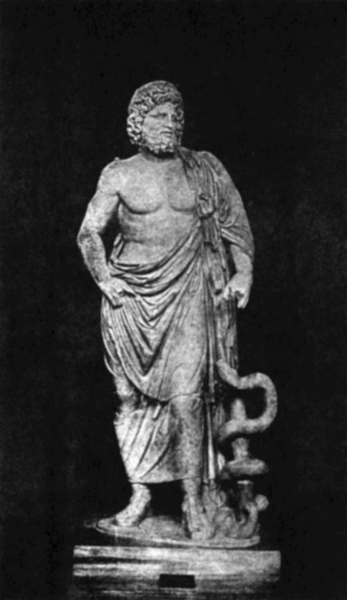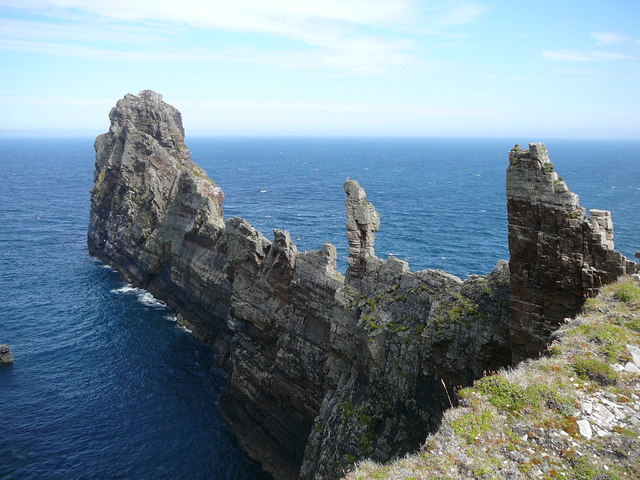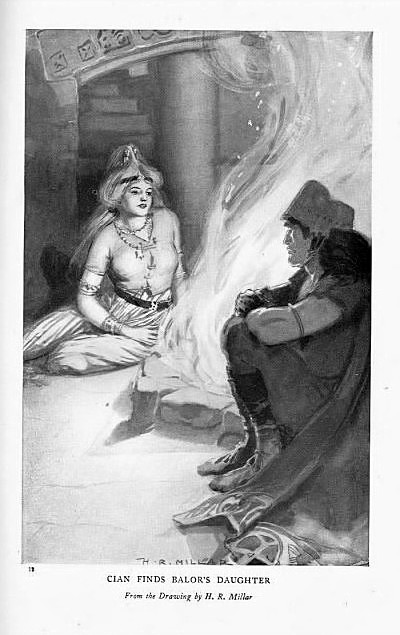|
Dian Cecht
In Irish mythology, Dian Cécht (Old Irish pronunciation ; also known as ''Cainte'' or ''Canta'') was the god of healing, the healer for the Tuatha Dé Danann, and son of the Dagda according to the ''Dindsenchas''. He was the father of Cu, Cethen and Cian. His other children were Miach, Airmed, Étan the poet and Ochtriullach (Octriuil). Through Cian, he is also Lugh's paternal grandfather. Etymology The name Dian Cecht may be a combination of the Old Irish common words ''dían'' 'swift' and ''cécht'', glossed as 'power', hence the literal meaning may be literally "swift power".Koch, J. T. (2006),Celtic culture: a historical encyclopedia', Vols. 1-4 - p. 586. The refers to him as the "god of power", with ''cécht'' glossed as "power" ( sga, cumachtae). In Old Irish, there is also the word ''cécht'' meaning 'plough-beam' (or less accurately 'ploughshare'), but this makes "little sense in the light of his activities", and this lexical meaning is "presumably not relevant". ... [...More Info...] [...Related Items...] OR: [Wikipedia] [Google] [Baidu] |
God Of Healing
A health deity is a god or goddess in mythology or religion associated with health, healing and wellbeing. They may also be related to childbirth or Mother Goddesses. They are a common feature of polytheistic religions. List of health deities African * Jengu, water spirits that bring good fortune and cure disease * Waaq/Waaqa, sky god that was worshipped by the Somali and Oromo people before Islam and Christianity * !Xu, sky god of the Bushmen of southern Africa who is invoked in illness * Sonzwaphi, deity of healing, Zulu mythology Yoruba and Afro-American * Aja, spirit of the forest, the animals within it and herbal healers * Babalú-Ayé, spirit of illness and disease * Erinlẹ, spirit of abundance, the healer, and Physician to the Orisha * Loco, patron of healers and plants * Mami Wata, a pantheon of water deities associated with healing and fertility * Ọsanyìn, spirit of herbalism * Sopona, god of smallpox Armenian * Anahit, goddess of fertility and healing, wisdom ... [...More Info...] [...Related Items...] OR: [Wikipedia] [Google] [Baidu] |
Sound Change
A sound change, in historical linguistics, is a change in the pronunciation of a language. A sound change can involve the replacement of one speech sound (or, more generally, one phonetic feature value) by a different one (called phonetic change) or a more general change to the speech sounds that exist (phonological change), such as the merger of two sounds or the creation of a new sound. A sound change can eliminate the affected sound, or a new sound can be added. Sound changes can be environmentally conditioned if the change occurs in only some sound environments, and not others. The term "sound change" refers to diachronic changes, which occur in a language's sound system. On the other hand, " alternation" refers to changes that happen synchronically (within the language of an individual speaker, depending on the neighbouring sounds) and do not change the language's underlying system (for example, the ''-s'' in the English plural can be pronounced differently depending on ... [...More Info...] [...Related Items...] OR: [Wikipedia] [Google] [Baidu] |
Balor
In Irish mythology, Balor or Balar was a leader of the Fomorians, a group of malevolent supernatural beings. He is often described as a giant with a large eye that wreaks destruction when opened. Balor takes part in the Battle of Mag Tuired, and is primarily known from the tale in which he is killed by his grandson Lugh of the Tuatha Dé Danann. He has been interpreted as a personification of the scorching sun, and has also been likened to figures from other mythologies, such as the Welsh Ysbaddaden and the Greek Cyclops. Name The name ''Balor'' or The Lonni may come from Common Celtic ''*Boleros'', meaning "the flashing one". In the early literature he is also referred to as ''Balor Béimnech'' (Balor the smiter), ''Balor Balcbéimnech'' (Balor the strong smiter), ''Balor Birugderc'' (Balor of the piercing-eye), ''Balor mac Doit meic Néid'' (Balor, son of Dot son of Nét) or ''Balor ua Néit'' (Balor, grandson of Nét). Later forms are ''Balor Béimeann'' or ''Balar Bemen' ... [...More Info...] [...Related Items...] OR: [Wikipedia] [Google] [Baidu] |
Ethniu
In Irish mythology, Ethniu (), or Eithne (Modern Irish pronunciation: ) in modern spelling, is the daughter of the Fomorian leader Balor, and the mother of Lugh. She is also referred to as Ethliu (modern Eithle), Eithlionn (genitive; modern Eithleann), and Ethlinn (dative; modern Eithlinn). Name Ethniu is a fine example of the difficulty of conducting research into Irish mythology. Her oldest version of her name is probably Ethliu or Ethniu, giving rise to the modern Irish name Eithne. However thanks to changes in the Irish language, the lack of standardised spelling for many centuries, and attempts to anglicise the name, variations have arisen. Linguistic ignorance has further confused the issue: the genitive form of ''Ethniu'' is ''Ethnenn'' (modern ''Eithneann'') and the genitive of ''Ethliu'' is ''Ethlenn/Ethlinn'' (modern ''Eithleann/Eithlinn''), as in ''mac Ethlenn'' ("Ethliu's son"). This genitive has often been taken for a nominative, or a mistaken nominative has been in ... [...More Info...] [...Related Items...] OR: [Wikipedia] [Google] [Baidu] |
Brian (mythology)
In Gaelic mythology, Brian (or Uar) was one of the three Sons of Tuireann along with Iuchar and Iucharba. Name In many extant institutionally-held manuscripts of the ''Oidheadh Chlainne Tuireann'', Brian is actually called Uar (or Uair), but the name has been emended by editors to "Brian" which conforms with the name in ancient texts. Eugene O'Curry was working from a manuscript in his possession, and gives the name as "Brian", but notes that "Uar" was an alternate name for Brian. Plot In ''Oidheadh Chlainne Tuireann'' (The Tragedy of the Sons of Tuireann), the three set out to kill their father's enemy Cian. Cian is the father of Lugh, one of the greatest of the Tuatha Dé Danann. Cian shapeshifts into a pig to disguise himself, but the brothers shapeshift into dogs and hound him. They kill him, dismember his body and try to cover up their crime. In recompense, Lugh makes them quest all around the known world fetching magical weapons, which Lugh plans to use at the Second Ba ... [...More Info...] [...Related Items...] OR: [Wikipedia] [Google] [Baidu] |
Lebor Gabála Érenn
''Lebor Gabála Érenn'' (literally "The Book of the Taking of Ireland"), known in English as ''The Book of Invasions'', is a collection of poems and prose narratives in the Irish language intended to be a history of Ireland and the Irish from the creation of the world to the Middle Ages. There are a number of versions, the earliest of which was compiled by an anonymous writer in the 11th century. It synthesised narratives that had been developing over the foregoing centuries. The ''Lebor Gabála'' tells of Ireland being settled (or "taken") six times by six groups of people: the people of Cessair, the people of Partholón, the people of Nemed, the Fir Bolg, the Tuatha Dé Danann, and the Milesians. The first four groups are wiped out or forced to abandon the island; the fifth group represent Ireland's pagan gods, while the final group represent the Irish people (the Gaels). The ''Lebor Gabála'' was highly influential and was largely "accepted as conventional history by poet ... [...More Info...] [...Related Items...] OR: [Wikipedia] [Google] [Baidu] |
Tract (literature)
A tract is a literary work and, in current usage, usually religious in nature. The notion of what constitutes a tract has changed over time. By the early part of the 21st century, a tract referred to a brief pamphlet used for religious and political purposes, though far more often the former. Tracts are often either left for someone to find or handed out. However, there have been times in history when the term implied tome-like works. A ''tractate'', a derivative of a tract, is equivalent in Hebrew literature to a ''chapter'' of the Christian Bible. History The distribution of tracts pre-dates the development of the printing press, with the term being applied by scholars to religious and political works at least as early as the 7th century. They were used to disseminate the teachings of John Wycliffe in the 14th century. As a political tool, they proliferated throughout Europe during the 17th century. They have been printed as persuasive religious material since the invention ... [...More Info...] [...Related Items...] OR: [Wikipedia] [Google] [Baidu] |
Brittonic Languages
The Brittonic languages (also Brythonic or British Celtic; cy, ieithoedd Brythonaidd/Prydeinig; kw, yethow brythonek/predennek; br, yezhoù predenek) form one of the two branches of the Insular Celtic language family; the other is Goidelic. The name ''Brythonic'' was derived by Welsh Celticist John Rhys from the Welsh word , meaning Ancient Britons as opposed to an Anglo-Saxon or Gael. The Brittonic languages derive from the Common Brittonic language, spoken throughout Great Britain during the Iron Age and Roman period. In the 5th and 6th centuries emigrating Britons also took Brittonic speech to the continent, most significantly in Brittany and Britonia. During the next few centuries the language began to split into several dialects, eventually evolving into Welsh, Cornish, Breton, Cumbric, and probably Pictish. Welsh and Breton continue to be spoken as native languages, while a revival in Cornish has led to an increase in speakers of that language. Cumbric and Pictish are ... [...More Info...] [...Related Items...] OR: [Wikipedia] [Google] [Baidu] |
Theonym
A theonym (from Greek ''theos'' (Θεός), "god"'','' attached to ''onoma'' (ὄνομα), "name") is the proper name of a deity. Theonymy, the study of divine proper names, is a branch of onomastics (the study of the etymology, history, and use of proper names.); it helps develop an understanding of the function and societal views of particular gods and may help understand the origins of a society's language. Analysis of theonyms has been useful in understanding the connections of Indo-European languages, and possibly their religion. In all languages, the analysis of the possible etymological origin of a theonym can serve as basis for theories of its historical origin. Metaphysical and mystical meanings are also discerned in theonyms, as in Kabbalah. Theonyms can also appear as all or part of a name for a human, animal, thing or place. See also * -onym * Theo * Theology * Thealogy, similar origin as above, but female instead * God (word) * Names of God * Nomenclature * Ono ... [...More Info...] [...Related Items...] OR: [Wikipedia] [Google] [Baidu] |
Indogermanisches Etymologisches Wörterbuch
The ''Indogermanisches etymologisches Wörterbuch'' (''IEW''; "Indo-European Etymological Dictionary") was published in 1959 by the Austrian-German comparative linguist and Celtic languages expert Julius Pokorny. It is an updated and slimmed-down reworking of the three-volume ''Vergleichendes Wörterbuch der indogermanischen Sprachen'' (1927–1932, by Alois Walde and Julius Pokorny). Both of these works aim to provide an overview of the lexical knowledge of the Proto-Indo-European language accumulated through the early 20th century. The ''IEW'' is now significantly outdated, especially as it was conservative even when it was written, ignoring the now integral laryngeal theory, and hardly including any Anatolian material. Editions *French & European Publications (1969), *Francke 4th ed. (2002), 5th ed. (2005), See also * Proto-Indo-European language * Proto-Indo-European root ;Other Proto-Indo-European language dictionaries and grammars * ''Grundriß der vergleichenden Gramm ... [...More Info...] [...Related Items...] OR: [Wikipedia] [Google] [Baidu] |
Julius Pokorny
Julius Pokorny (12 June 1887 – 8 April 1970) was an Austrian-Czech linguist and scholar of the Celtic languages, particularly Irish, and a supporter of Irish nationalism. He held academic posts in Austrian and German universities. Early life and education He was born in Prague, Bohemia, under the Austro-Hungarian Empire, and he was educated at the Piarist School in Prague and the Benedictine Abbey school in Kremsmünster, Austria. From 1905 until 1911, he studied at the University of Vienna, graduating in law and philology, and he taught there from 1913 to 1920. Career During World War I, Pokorny was involved in pro-German propagandist activities, inciting the Irish against England. He is known to have met and corresponded with Roger Casement, an activist for Irish independence who was executed in 1916. Pokorny also served in the war as a reservist in the Austrian ( Cisleithanian) Army starting in 1916. In 1920, he succeeded Kuno Meyer as Chair of Celtic Philology at Friedr ... [...More Info...] [...Related Items...] OR: [Wikipedia] [Google] [Baidu] |
Lexicon
A lexicon is the vocabulary of a language or branch of knowledge (such as nautical or medical). In linguistics, a lexicon is a language's inventory of lexemes. The word ''lexicon'' derives from Koine Greek language, Greek word (), neuter of () meaning 'of or for words'. Linguistic theories generally regard human languages as consisting of two parts: a lexicon, essentially a catalogue of a language's words (its wordstock); and a grammar, a system of rules which allow for the combination of those words into meaningful sentences. The lexicon is also thought to include bound morphemes, which cannot stand alone as words (such as most affixes). In some analyses, compound words and certain classes of idiomatic expressions, collocations and other phrases are also considered to be part of the lexicon. Dictionary, Dictionaries are lists of the lexicon, in alphabetical order, of a given language; usually, however, bound morphemes are not included. Size and organization Items in the le ... [...More Info...] [...Related Items...] OR: [Wikipedia] [Google] [Baidu] |





